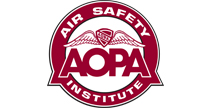Too much too fast
(ERA10FA140)
 By David Jack Kenny
By David Jack Kenny
FAR 91.303 (not to mention common sense) places some restrictions on when and where pilots “may operate an aircraft in aerobatic flight.” Among them are prohibitions on doing so over “any congested area” of a city or town, within four nautical miles of the centerline of a federal airway, or less than 1,500 feet above the ground. (Appropriately qualified performers can apply for waivers.) The regulation is also gracious enough to define “aerobatic flight,” which turns out to include considerably more than Cuban eights, inverted spins, and other staples of airshows and competition. Those restrictions extend to any “intentional maneuver involving an abrupt change in an aircraft’s attitude, an abnormal attitude, or abnormal acceleration, not necessary for normal flight.”
One of the stunts that pilots frequently fail to recognize as at least potentially aerobatic is the so-called “airshow pass”—a high-speed, low-altitude flight along a runway that ends with a sharp pull-up and steep climb. It doesn’t look tricky. About all that’s needed is a strong pull on the yoke, and as long as nothing goes wrong it should look pretty impressive to everybody watching from the ramp. Unfortunately, without prior training something very well may go wrong. Usually it’s an accelerated stall at a speed and altitude that leave no chance of recovery—but occasionally the results are even more spectacular.
On Feb. 15, 2010, a Cessna T337G Skymaster flew gear-up along Runway 32 of New Jersey’s Monmouth Executive Airport at an altitude of no more than 50 feet. Three adults and two children were on board, and several of their relatives were watching from in front of the Cessna’s hangar. The pilot had announced over the CTAF that he planned to do a low pass, and sure enough, about a third of the way down the 7,371-foot runway, the airplane began to pitch up. Almost immediately, the outermost six feet of the right wing detached. The Skymaster rolled right and crashed off the side of the runway, killing everyone on board.
Witnesses, including several other pilots, agreed that the airplane seemed to be going unusually fast before the pull-up. Data from a handheld GPS found in the wreckage confirmed it: The last recorded groundspeed was 160 knots, 25 knots above the maneuvering speed listed on a placard over the airspeed indicator. Investigators were also able to determine that the airplane was loaded to more than 500 pounds more than its maximum authorized zero-fuel weight—a design limitation imposed to prevent excessive loading of the wing spars.
Examination by the NTSB Materials Laboratory found that the right front spar had indeed bent upward until it failed; the rear spar had been twisted apart. According to the lab, “None of the fracture surfaces showed signs of fatigue.” The front spar of the left wing had also bent upward, though that wing stayed in one piece. A mechanic who had worked on the Skymaster told investigators that the pilot had shown him both still photographs and video footage of the same airplane doing “a high-speed pass and hard pull-up” and claimed to have been at the controls. The mechanic had tried to warn him “that the aircraft was not designed for [that] type of operation.”
Carrying out “that type of operation” while too heavy and flying too fast might have caused enough trouble by itself, but the NTSB also noted another cause for concern: The airplane had been modified under no fewer than 22 different Supplemental Type Certificates. Some were fairly trivial—there’s not much reason to think the Rosen sun visors contributed to the accident—but four involved modifications to the wings. After installation of a STOL kit, each wing had been fitted with three-foot extensions containing tip tanks and an associated fuel jettison system and then equipped with winglets. While each modification had to be tested individually to earn its STC, the cumulative effects of the entire combination on wing loads had never been evaluated.
It’s entirely possible that the pilot was not aware of this last consideration. Without a detailed knowledge of the approval process, it’s easy to assume that any product with an STC can safely be installed on any aircraft for which it’s approved. The fact that they’re not tested in combination makes sense, but only after you think about it. So this pilot may not have been aware that his certified airplane was now effectively a test bed whose structural characteristics were no longer known with certainty.
That would have been a good reason to treat it just a bit more gently. Given his apparent disregard for its other operating limitations, though, it’s not clear this consideration would have made much difference. It’s hard to argue that he shouldn’t have known the airplane was significantly overweight, and hard to believe he couldn’t read both the airspeed indicator and the placard above it. If high speed, excessive weight, and federal regulations weren’t enough to deter him from aggressive low-altitude maneuvering, a little uncertainty about the cumulative effects of structural modifications might not have done it, either.
Related Links
"Maneuvering Flight: Hazardous to Your Health?" Safety Advisor
Aging Aircraft online course
"Real Aviation Heroes" Pilot Safety Announcement
Mayday at Mount McKinley Real Pilot Story
Essential Aerodynamics: Stalls, Spins, and Safety online course